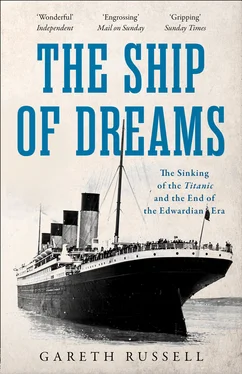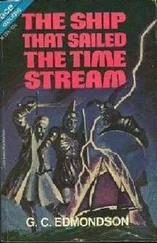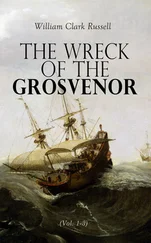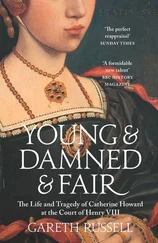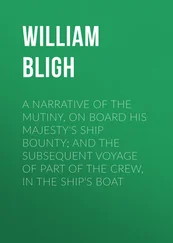With respect to a fine historian, this sounds unduly curmudgeonly. The Titanic has become both cultural touchstone and looking glass. There is an enduring sense that what happened to the Titanic in April 1912 was somehow totemic, a process which began during her construction, when the Titanic was woven into a political debate over the future of the United Kingdom. The Titanic , like her sister ships, was a child of Anglo-American capitalism. In response to the disaster, King George V sent a public telegram of condolence to President Taft in which he expressed how he and his wife were ‘anxious to assure you and the American nation of the great sorrow which we experienced at the terrible loss of life that has occurred among the American citizens, as well as many of my own subjects, by the foundering of the Titanic . Our two countries are so intimately allied by ties of friendship and brotherhood that any misfortunes which affect the one must necessarily affect the other, and on the present terrible occasion they are both equally sufferers.’[16]
The 2012 centenary of the disaster significantly increased the corpus of Titanic literature, with several excellent panoramic accounts of the voyage appearing in print, including the immensely thorough On a Sea of Glass , product of the research and authorship of Tad Fitch, J. Kent Layton and Bill Wormstedt. In the strictest sense, The Ship of Dreams is not solely an account of the Titanic disaster, nor a striving to replace the works of earlier scholars who examined the catastrophe as a whole. As its subtitle suggests, it is an attempt to look at her sinking as a fin de siècle , with a deliberate exploration of the voyage as a microcosm of the unsettled world of the Edwardian upper classes. With the admittedly dubious benefit of hindsight, the Titanic ’s story functions like the Lady of Shalott’s mirror, reflecting shadows of the world around it, its splendours and injustices. Since its maiden voyage, the ship has been inextricably linked in popular culture with the question of class. British taste and American money built the Titanic , which had room for more first-class passengers, even as a percentage, than almost any other ship then at sea, and the perceived symbiosis between the Titanic and the elites who designed her and sailed on her is compelling.[17] In the years before the Titanic ’s creation, the Industrial Revolution and the corresponding expansions of both the British Empire and the American economy had created new kinds of wealth. Modernity had shaken the class system. There were many different kinds of privilege in pre-war Britain and America, the Titanic ’s respective spiritual and economic homelands, and all of these elites would be, as individuals and a class, changed by the decade that lay ahead.
The focus of this narrative is six first-class passengers and their families: a British aristocrat, a patriotic maritime architect, an American plutocrat and his son, a first-generation American philanthropist, and one of the first movie stars. By examining its story through the experiences of these six first-class passengers, it is not only possible to explore the ways in which the upper classes were changing by 1912 but also to reflect on how the isolation created by privilege left many of them unaware or indifferent to the coming danger, until it was too late. Some first-class passengers did not realise anything was seriously wrong with the Titanic until they spotted pyjama legs poking from beneath the trousers of the White Star Line’s normally fastidiously well-dressed Managing Director. Others belatedly guessed that a crisis was looming when they realised that some of the people standing next to them on the Promenade Deck were from Third Class. The Titanic ’s only commercial voyage is a window into a world that was by turns victim and author of the tragedies that overtook it.
Sources from the Titanic ’s passengers and crew are numerous. There are inevitable problems in reliability arising from eyewitness testimonies by those who were participants in something deeply traumatic. It is not always possible or advisable to construct a precise chronology of what happened between the Titanic ’s collision with the iceberg and the rescue of her survivors. One can, however, query the improbable or dismiss the impossible and, by comparing eyewitness accounts with modern research, particularly after the discovery of the Titanic ’s wreck, offer a convincing account of the Titanic ’s short career.
In a dream I saw territories,
So broad, so rich and handsome,
Lapped by the blue sea,
Rimmed by mountains’ crest.
And at the centre of the territories
Stood a tall oak tree,
Of venerable appearance,
Almost as old as its country.
Storms and weather
Had already taken their toll;
Almost bare of leaves it was,
Its bark rough and shaggy.
Only its crown on high
Had not been blown away,
Woven of parched twigs,
Skeleton of former splendour …
Elisabeth of Bavaria (1837–98), Empress of Austria and Queen of Hungary, ‘Neujahrsnacht 1887’
FLOWING IN FROM NORTH AND WEST, WEAVING PASTRoman and Celtic monuments of obscure purpose, two streams joined with the River Leven to ring the ‘magnificently wooded gardens’ of Leslie House, the thirty-seven-bedroom country seat of Norman Leslie, 19th Earl of Rothes.[fn1] Nestling in 10,000 acres of ‘excellent arable land’, in 1911 Leslie House dominated the encircling parish, as it had for centuries. The minister of the local Church of Scotland drew his salary from the Earl’s coffers. So complete was the Leslie family’s influence in this part of eastern Scotland that the parish’s ancient recorded name of Fetkill had faded to become the parish of Leslie.
It had been predominantly a benign local absolutism. When an amateur historian arrived in Leslie in the 1830s, in the hope of unearthing grisly anecdotes from the village archives, he was, in his own words, distressed to find ‘nothing generally interesting in them’, with no perceptible drama having occurred in Leslie over the course of the last 300 years. The 800-seat chapel was built, the flax mills spun, whisky houses and inns were opened, closed and renamed, and local legend had it that King James V had written his poem ‘Christ’s Kirk on the Green’, in celebration of a Caledonian pastoral idyll, after his hunting trip near the village in the 1530s.[1]
As the Edwardian era drew to its close, the then Countess of Rothes, Lucy NoÉlle Martha Leslie, had busied herself with the renovation and preservation of Leslie House. Given the spiralling cost of maintaining a stately home, expansion, in the hope of restoring the house to what it had been in the previous centuries, would have been financially lunatic, although even at that the young Countess had sunk nearly £11,000 of her natal family’s money into the preservation and beautification of her husband’s ancestral home.[2] She had married into the Leslie family on a ‘delightfully bright and genial’ day in 1900, with a service at St Mary Abbots Church in Kensington, near the London townhouse of her parents where the future countess had been born on Christmas Day twenty-two years earlier.[3] Christ’s Nativity gave Lucy Dyer-Edwardes the first of her two middle names, Noël (the spelling on her birth certificate, but commonly spelled in Society columns and by various relatives as Noëlle); the other was Martha. These names and spellings were used variably throughout her life, although by adulthood she increasingly seemed to prefer her middle name of Noëlle. Her education had been entrusted to governesses and tutors who moved with the family as they oscillated between the Kensington house, their château in Normandy and their favourite home, Prinknash Park, the Dyer-Edwardeses’ country seat in Gloucestershire. Prinknash, pronounced ‘Prinnage’ as one of the thousands of anti-phonetic nomenclatures that form the pleasurable minefield of English place names, was originally a Benedictine monastery founded, with spectacularly poor luck on the Order’s part, only thirteen years before England’s break with Rome. Secularised and sold by the Tudors, Prinknash Park had become a beautiful stately pile in idyllic countryside, where Noëlle’s father, Thomas, was free to pursue his fascination with his home’s long-dead original owners and, bit by bit, their Catholic faith, to the distress of his wife, who regarded the Church of Rome as a foreigner’s creed.[4]
Читать дальше
